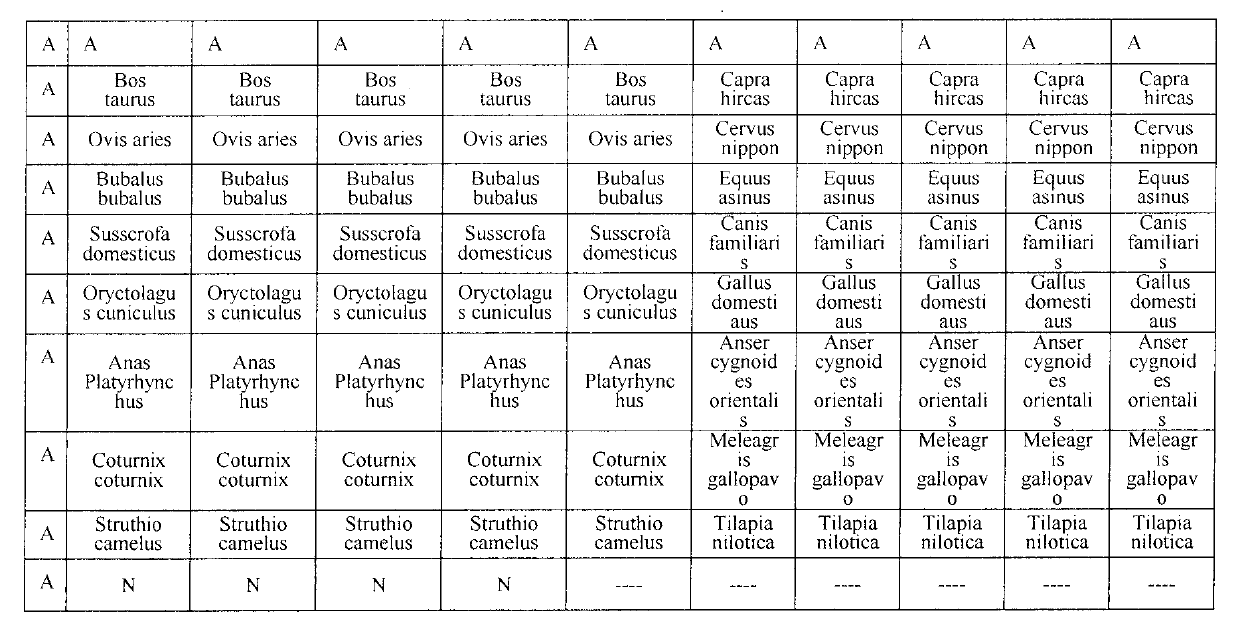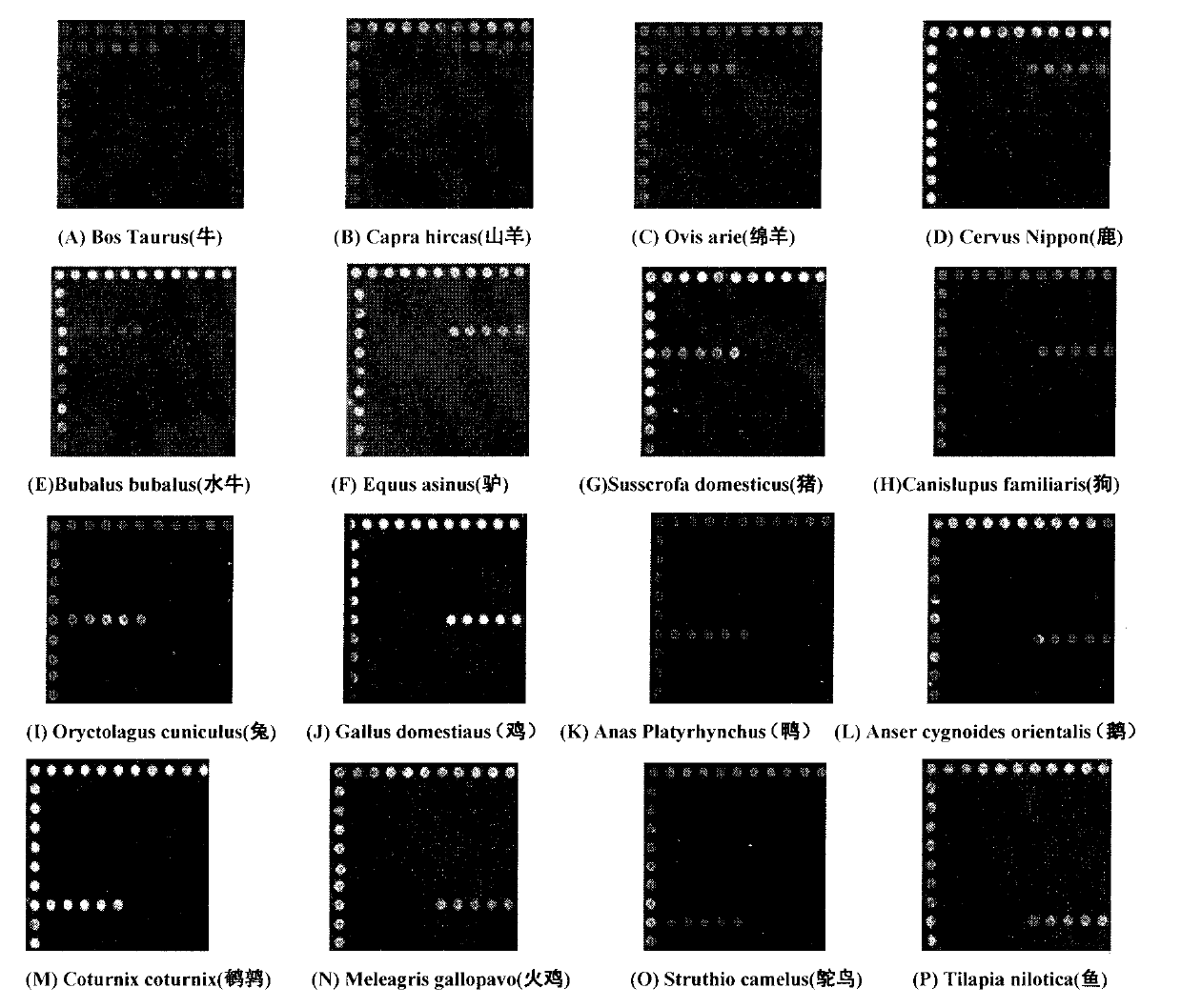Method of using gene chip technology to identify and detect 16 animal-derived compositions
An animal-derived component and gene chip technology, applied in the field of biology, can solve the problems of low detection efficiency and complex detection methods, and achieve the effects of high sensitivity, simple operation and strong specificity
- Summary
- Abstract
- Description
- Claims
- Application Information
AI Technical Summary
Problems solved by technology
Method used
Image
Examples
Embodiment 1
[0042] The preparation of embodiment 1 gene chip
[0043] 1. Design of primers and probes
[0044] According to the target DNA sequence homology analysis results, select each target specific DNA sequence, screen out all DNA fragments suitable for designing probes in the general primer amplification interval, use the primer and probe analysis software PrimerPremier 5.0 (this software can Various parameters of primers and probes are given, and primers and probes are effectively evaluated in many necessary aspects) to design and analyze to ensure the scientificity and practicability of the design. In order to ensure that all probes on the chip can get better hybridization effect at one hybridization temperature, the design of primers and probes should strictly follow the general design principles.
[0045]Submit the candidate sequences to GenBank for Blast comparison analysis. After screening, oligonucleotide sequences with theoretically better specificity are selected as detect...
Embodiment 2
[0053] Embodiment 2 gene chip detection method
[0054] 1. Materials and Instruments
[0055] 1. Materials
[0056] 1.1 Sample
[0057] Beef, goat, sheep, buffalo, pork, dog, rabbit, chicken, duck, goose, quail, turkey, ostrich and tilapia were purchased from a supermarket in Shenzhen, Guangdong, donkey and venison purchased from a supermarket in Hohhot, Inner Mongolia. These samples were all identified by species and verified by sequencing, and the results proved that they were all the species mentioned in their names.
[0058] 1.2 Main reagents
[0059] DMSO (Shanghai Sangon Bioengineering Co., Ltd.)
[0060] SDS (Shanghai Sangon Biological Engineering Co., Ltd.)
[0061] 1×TE (Shanghai Sangon Bioengineering Co., Ltd.)
[0062] NaBH 4 (Shanghai Sangon Bioengineering Co., Ltd.)
[0063] Ultrapure water (ddH 2 O)
[0064] Blank control: 50% DMSO
[0065] Spotting buffer: 50% DMSO
[0066] Washing solution after spotting: 0.2% SDS
[0067] Blocking solution after ...
Embodiment 3
[0100] Embodiment 3 specific detection
[0101] According to the above-mentioned test method, extract beef powder, goat meat powder, sheep meat powder, venison powder, buffalo meat powder, donkey meat powder, pork powder, dog meat powder, rabbit meat powder, chicken powder, duck meat powder, goose meat powder, quail meat powder, turkey meat powder, The DNA of 16 kinds of livestock and poultry, such as ostrich meat powder and tilapia meat powder, were subjected to chip hybridization experiments under the conditions of the optimal fluorescent labeling temperature combination to verify the specificity of the method. ( image 3 )
PUM
 Login to View More
Login to View More Abstract
Description
Claims
Application Information
 Login to View More
Login to View More - R&D Engineer
- R&D Manager
- IP Professional
- Industry Leading Data Capabilities
- Powerful AI technology
- Patent DNA Extraction
Browse by: Latest US Patents, China's latest patents, Technical Efficacy Thesaurus, Application Domain, Technology Topic, Popular Technical Reports.
© 2024 PatSnap. All rights reserved.Legal|Privacy policy|Modern Slavery Act Transparency Statement|Sitemap|About US| Contact US: help@patsnap.com










